Posts tagged Evolution

Jumping Down the Road to Cancer.
Aug 28th
Lying dormant in our genomes are millions of jumping genes. Originally discovered by Barbara McClintock, transposons are DNA sequences that can move from one location to another in our DNA. Transposons cause mutations when they jump to new locations, so keeping them from jumping is important. However, although transposons are largely silent, every person probably has a few “rare” sites, found in only a few people in the world, where a transposon has jumped to a new location.
Mutations in numerous pathways need to accumulate for cancer to progress. Given the ability of transposons to cause mutation and the role of mutation in More >
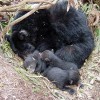
Hibernation – Why Not Me?
Feb 16th
It’s the season of hibernation, something I’ve always wished I could do. Oh, to wrap up in a ball, sleep away the winter, and wake to a beautiful spring day – like Bambi! Although the thought has always intrigued me, it never really occurred to me what a feat hibernation actually is. It turns out that all of the bears, squirrels, rabbits etc…. that I thought were just sleeping, are breaking biological laws!! If I was to stay dormant for 5 months, without food or drink and little to no movement in freezing temperatures I would die, so no hibernating More >
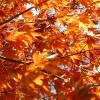
Autumn Leaves
Oct 28th
Autumn is my favorite season. I enjoy the cool weather, unpacking my sweaters from the attic and sleeping under my cozy comforter. But better than all of the above are the fantastic red, yellow and orange leaves that adorn the deciduous trees here in New York. Before I worked at the DNA Learning Center, this process was simply a beautiful rite of fall. Now, I see the whole process in a different light. It’s an elegant series of genetic steps that evolved millions of years ago, for a reason much bigger than beauty!
For most of the year, deciduous trees are More >

Can I Teach That?
Sep 21st
Recently I worked with a group of graduate students who volunteered to be science mentors for students in New York City. They were being trained in a small set of hands-on labs designed to introduce genetics in an engaging, informal environment. At some point during the training, we touched upon genetic mutations and variation. I mentioned that it was a perfect segway into discussion of natural selection and evolution. One participant raised her hand and asked, “Are we allowed to teach that?” My initial response was surprise. I said, “Of course!” It is unfortunate though, that as science educators we should even More >
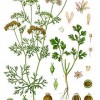
Cilantrophobia
Apr 14th
Growing up I was a very picky eater. When I didn’t like what my mother had prepared for dinner, I would usually just say, “I’m not hungry” and make myself a peanut butter sandwich. As a grown up, my food choices have changed a great deal, in fact, I enjoy trying new things and watching to Food Network for good ideas.
One of the cooking tips that I have picked up from all of the foodie shows I watch is to use fresh herbs, whenever possible. Believe it or not, that green spring of parsley on my plate at restaurants that More >
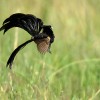
Sexual Selection
Apr 1st
When we think about all of the living things on Earth, we immediately see how different we all are from each other. Many of these traits that might seem bizarre to us, evolutionarily speaking, have a tremendous amount to do with the survival. Many traits have been selected for by the opposite sex, because it will help the passing on of their design information.
One very amazing example of this is the Widowbirds that live in the grasslands of southern and eastern Africa. During the non-mating season, the males and females look very similar to one another. Once breeding season begins, More >
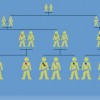
The Confusion About Adaptation
Dec 7th
One of the most difficult concepts to teach anyone is the relationship between evolution and adaptation. The majority of people I have worked with, both adults and children, are confused about this to some extent. Let’s first create a simple story to frame our discussion.
Once upon a time, in a forest with leaves and soil on the ground, there is a family of rabbits. Many animals live in this forest, including several predators for the rabbits. The mom and dad are both brown rabbits and most of their rabbit children are also brown. One of the children was born with More >
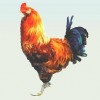
Chikafrogonewtasaurus
Sep 4th
Being an educator at the DNALC does not mean that everything has to be all “DNA”! Sometimes, it’s all about proteins. My background is in ecology and evolution, with a particular bent towards dinosaurs. In 2005, dinosaur paleontologists decided to slice the leg bone of a 68 million year old Tyrannosaurus rex, just to see what it looked like inside. They were in for a surprise. There were remnants of soft tissue – still present after 68 million years!!
In 2007, they were able to identify and compare seven protein sequences. Three of these proteins seemed to be closely related to chickens. More >
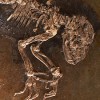
Ida – Overwhelming or Over-Hyped?
May 26th
Last week, the fossil skeleton known as “Ida” was introduced to the world with a fanfare rarely seen in the scientific community. Touted by publicists as the find “that will change everything”, Ida’s arrival on the world scene has provoked a mixed reaction from researchers and commentators.
Ida was a lemur-like mammal that roamed central Europe about 47 million years ago. She died at a relatively young age of 9 months, on the banks of the volcanic Lake Messel in modern-day Germany. The circumstances of her death play a large part in her current fame – researchers involved in the find More >
